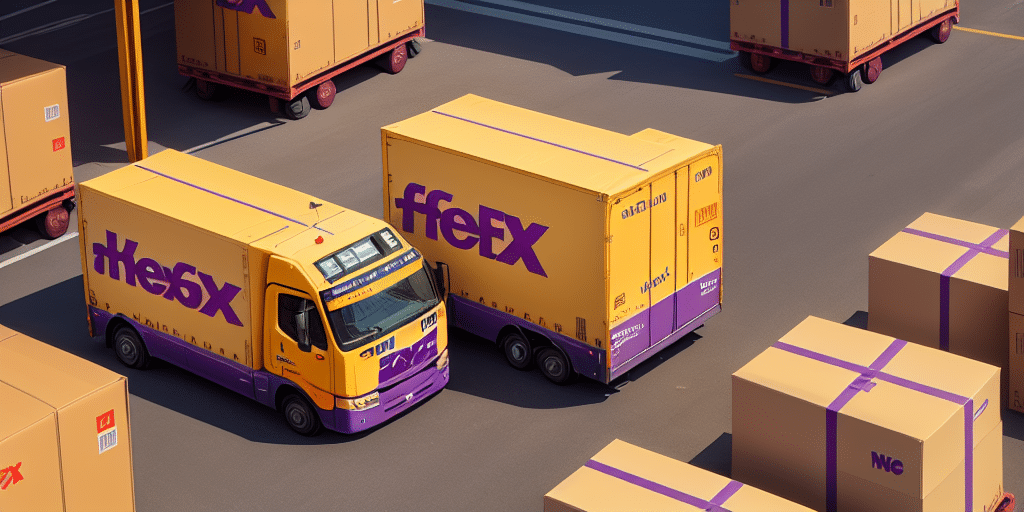Understanding How FedEx Calculates Freight Shipping Rates
FedEx freight shipping rates are determined by a comprehensive pricing system that considers several key factors, including the shipment's weight, dimensions, distance traveled, freight class, and the value of the goods being transported. Additionally, FedEx incorporates various surcharges based on delivery area, fuel prices, residential delivery, and other factors to arrive at the total shipping cost.
Freight Class plays a significant role in pricing and is determined by the National Motor Freight Traffic Association (NMFTA). Freight class is based on the shipment's density, stowability, handling, and liability. Higher freight classes indicate lower density or higher handling requirements, which result in higher shipping rates. It is crucial for businesses to accurately classify their freight to avoid unexpected charges and ensure compliance with FedEx’s pricing guidelines.
FedEx also offers expedited freight services for urgent shipments, including same-day and next-day delivery options. While these services come at a premium cost, they provide essential flexibility for businesses needing to meet tight deadlines or respond to unexpected demands quickly.
Key Factors Influencing FedEx Freight Shipping Rates
Weight and Dimensions
The weight and size of your shipment are primary determinants of shipping costs. Heavier and larger shipments require more resources, resulting in higher rates. Accurate measurement and packaging optimization can influence the final cost significantly.
Distance
The distance your shipment needs to travel directly impacts the shipping rate. Longer distances typically incur higher costs due to increased fuel consumption and labor.
Freight Class
As mentioned, freight class affects the rate based on the shipment's characteristics. Proper classification ensures you pay the appropriate rate for your goods.
Value of Goods
The declared value of the goods being shipped determines the insurance fee, affecting the total shipping rate. High-value items require additional protection, which increases costs.
Mode of Transportation
FedEx offers various transportation modes, such as air and ground. Air freight, being faster, generally costs more than ground transportation. The selection of transportation mode should align with your delivery timeline and budget.
Destination
Delivering to remote or hard-to-reach areas may incur additional charges due to the extra resources required to complete the delivery efficiently.
For more detailed information on FedEx's freight shipping rates, refer to the FedEx Freight Shipping Rates.
Strategies to Optimize and Save on FedEx Freight Rates
Optimize Packaging
Reducing the size and weight of your shipment through optimized packaging can lead to significant cost savings. Use of appropriate packaging materials and methods can minimize dimensional weight.
Select the Correct Freight Class
Choosing the correct freight class ensures that you are not overpaying for shipping. Accurate classification based on density and handling requirements can lower your shipping costs.
Utilize a Freight Broker
Collaborating with a freight broker can help negotiate better rates, manage shipping logistics efficiently, and provide access to discounts and rebates that may not be available directly from FedEx.
Take Advantage of FedEx Discounts
Explore eligibility for any of FedEx's available discounts and offers. Businesses frequently shipping large volumes may qualify for volume-based discounts that can reduce overall shipping expenses.
Schedule Shipments in Advance
Planning your shipments ahead of time allows you to take advantage of lower rates and avoid rush fees. Additionally, consolidating multiple shipments into one can provide cost efficiency.
For more tips on reducing shipping costs, check out this resource on Inbound Logistics.
Comparing FedEx Freight with Ground Shipping and Other Carriers
FedEx Freight vs. FedEx Ground
FedEx Freight is tailored for larger or heavier shipments, typically over 150 pounds, and requires specialized equipment and handling. In contrast, FedEx Ground is designed for smaller shipments less than 150 pounds, generally offering faster delivery times at a lower cost.
FedEx vs. Other Carriers
When comparing FedEx Freight rates with other carriers like UPS, DHL, and USPS, it is essential to consider the additional services they offer. For instance, FedEx Freight provides temperature-controlled shipping for perishable items, whereas UPS offers specialized packaging for fragile goods.
Delivery Times
FedEx Freight provides various delivery options, including same-day, next-day, and two-day services. This flexibility can be a significant factor when choosing a shipping carrier based on your delivery timeline needs.
For a comprehensive comparison of shipping rates, refer to Capterra's Shipping Software Comparison.
Negotiating and Managing Your FedEx Shipping Rates Effectively
Obtain Competitive Quotes
Research and collect competitive quotes from different carriers to leverage better pricing with FedEx. Presenting these quotes during negotiations can help secure more favorable rates.
Volume Discounts
High-volume shippers often receive discounts. Engaging with FedEx to discuss volume-based pricing can lead to substantial cost savings over time.
Customized Shipping Solutions
Work directly with FedEx to develop shipping solutions tailored to your business’s specific needs. Customized approaches can often yield more efficient and cost-effective shipping arrangements.
Build Long-term Relationships
Establishing a long-term partnership with FedEx can open doors to more personalized services and better rates as trust and mutual business interests grow.
For more insights on negotiating shipping rates, see Entrepreneur's Guide to Negotiation.
Leveraging Technology to Optimize FedEx Freight Shipping Costs
FedEx Ship Manager®
This online platform allows businesses to manage shipments, print shipping labels, and track packages efficiently, thereby reducing manual errors and saving time.
FedEx Insight®
FedEx Insight provides real-time updates on shipment status, enabling better planning and management of logistics to optimize costs.
FedEx Freight® Box
This innovative packaging solution helps save space, time, and money by optimizing how goods are packaged and shipped, leading to reduced shipping costs.
Embracing technological solutions like these can significantly enhance your shipping efficiency and cost-effectiveness. Learn more about FedEx's technological tools on the FedEx Technology Solutions page.
Best Practices and Common Misconceptions in FedEx Freight Shipping
Common Misconceptions
- FedEx is the most expensive shipping company: Costs vary based on shipment size, weight, and destination. FedEx may offer competitive rates depending on your specific shipping needs.
- FedEx charges for proof of delivery: FedEx provides proof of delivery for every shipment at no additional cost.
- FedEx Freight is only for large shippers: FedEx Freight offers customized shipping solutions suitable for businesses of all sizes.
Best Practices
- Create a Shipping Budget: Establishing a realistic budget helps optimize your shipping expenditures and manage costs effectively.
- Track and Analyze Shipping Spend: Regularly monitoring your shipping costs can identify inefficiencies and opportunities for savings.
- Partner with a Freight Broker: A freight broker can streamline your shipping process and provide access to better rates and solutions.
By understanding and implementing these best practices, your business can effectively manage its FedEx freight shipping rates and minimize costs.
Addressing Disputes with FedEx Regarding Freight Shipping Rates
If you encounter disputes with FedEx over freight shipping rates, consider the following steps to resolve the issue:
- Contact Customer Support: Reach out to FedEx’s customer support to discuss and attempt to resolve the issue directly with a representative.
- Seek Legal Assistance: If the dispute cannot be resolved through customer support, exploring legal representation may be necessary to address the issue formally.
Effective communication and documentation are key when addressing disputes to ensure a swift and fair resolution. For more information on resolving shipping disputes, refer to the Federal Trade Commission's Guide on Resolving Shipping Disputes.
In conclusion, a thorough understanding of FedEx freight shipping rates is essential for managing your business effectively. By exploring the various factors that influence rates, implementing cost-saving strategies, comparing services with other carriers, and utilizing technology, your business can optimize its shipping operations. Additionally, clarifying misconceptions and adopting best practices will further aid in managing and reducing shipping costs. Should disputes arise, knowing the appropriate steps to resolve them ensures smooth business operations and sustained cost efficiency.






















